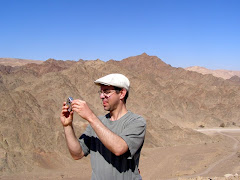 e the stars where aligned for us when we arrived in Konya and heard that once a week there was a free whirling dervish ceremony in the order’s cultural center. We had dinner and went in search of the place. The ceremony was certainly less energetic than folk dancing concerts I have witnessed. In fact, it was relaxing enough and my bed time is early enough that if it had gone on much longer I would have probably fallen asleep. But it was interesting and reading the short explanation about it in the guide book (again, afterwards as intellectual preparation wasn’t a theme of this trip) enhanced my appreciation.
e the stars where aligned for us when we arrived in Konya and heard that once a week there was a free whirling dervish ceremony in the order’s cultural center. We had dinner and went in search of the place. The ceremony was certainly less energetic than folk dancing concerts I have witnessed. In fact, it was relaxing enough and my bed time is early enough that if it had gone on much longer I would have probably fallen asleep. But it was interesting and reading the short explanation about it in the guide book (again, afterwards as intellectual preparation wasn’t a theme of this trip) enhanced my appreciation.The guidebook description of The Mevlevi worship ceremony, or sema:
The dervishes dress in long white robes with full skirts that represent their shrouds. Their voluminous black cloaks symbolize their worldly tombs, their conical felt hats their tombstones.
The ceremony begins when the hafiz, a scholar who has committed the entire Quran to memory, intones a prayer for Mevlana and a verse from the Quran. A kettledrum booms out, followed by the plaintive sound of the ney (reed flute). Then the sheyh (master) bows and leads the dervishes in a circle around the hall. After three circuits, the dervishes drop their black cloaks to symbolize their deliverance from worldly attachments. Then one by one, arms folded on their breasts, they spin out onto the floor as they relinquish the earthly life to be reborn in mystical union with God. By holding their right arms up, they receive the blessings of heaven, which are communicated to earth by holding their left arms turned down. As they whirl, they form a ‘constellation’ of revolving bodies, which itself slowly rotates. They sheyh walks among them to check that each dervish is performing the ritual properly. The dance is repeated over and over again. Finally, the hafiz again chants passages from the Quran, thus sealing the mystical union with God.
The museum surrounding the tomb of the poet Rumi (whose followers created the Dervish society) was another highlight.
The mosque on a small hill in the center of town had remnants of Byzantine buildings in the doorway and reused Byzantine columns in the worship area. However, the more interesting part of the site were two tombs in front of the entrance. These were the tomb of Seljuk rulers including: Alaeddin Keykubat I, Sultan Mesut I, Kilic Arslan, Kilic Arslan IV, Rukneddin Suleyman II, and Giyaseddin Keyhusrev I, II, and III.
We met the master felt maker at his workshop. I didn’t know the first thing about fe
 lt so my basic questions led to an explanation of what fur from the sheep is initially harvested and a bit about how the process works. We saw some felt at different stages of the process but mostly admired finished and near finished products. It was clear that he was a provider of felt hats to the dervishes and he explained some of the process of making the hats. He told of how he goes to wool festivals in the U.S.A. and that he will be bringing a couple of yurt to sell during his next trip.
lt so my basic questions led to an explanation of what fur from the sheep is initially harvested and a bit about how the process works. We saw some felt at different stages of the process but mostly admired finished and near finished products. It was clear that he was a provider of felt hats to the dervishes and he explained some of the process of making the hats. He told of how he goes to wool festivals in the U.S.A. and that he will be bringing a couple of yurt to sell during his next trip.At the end of the day, we got on an overnight train to Istanbul. I had been exposed to a new corner of the world that was foreign enough to be full of surprises.



